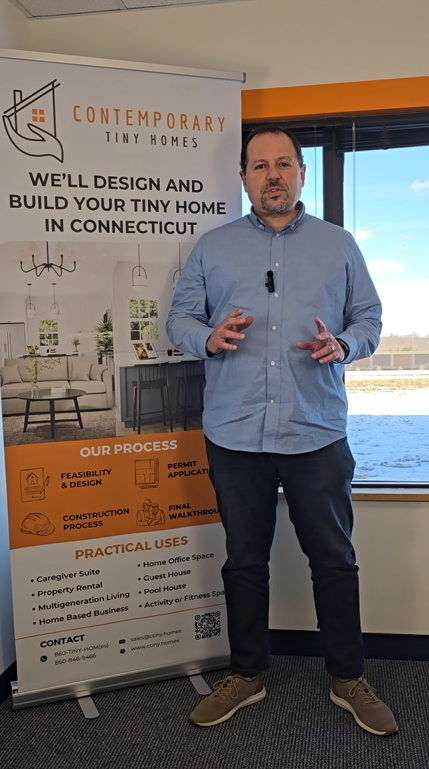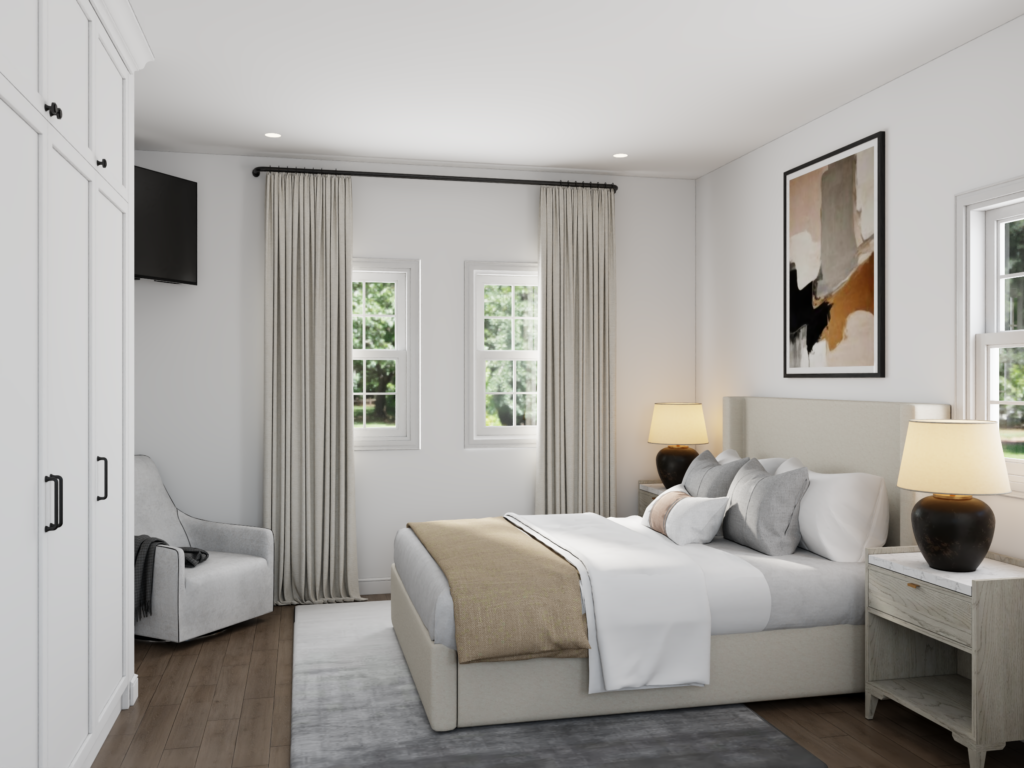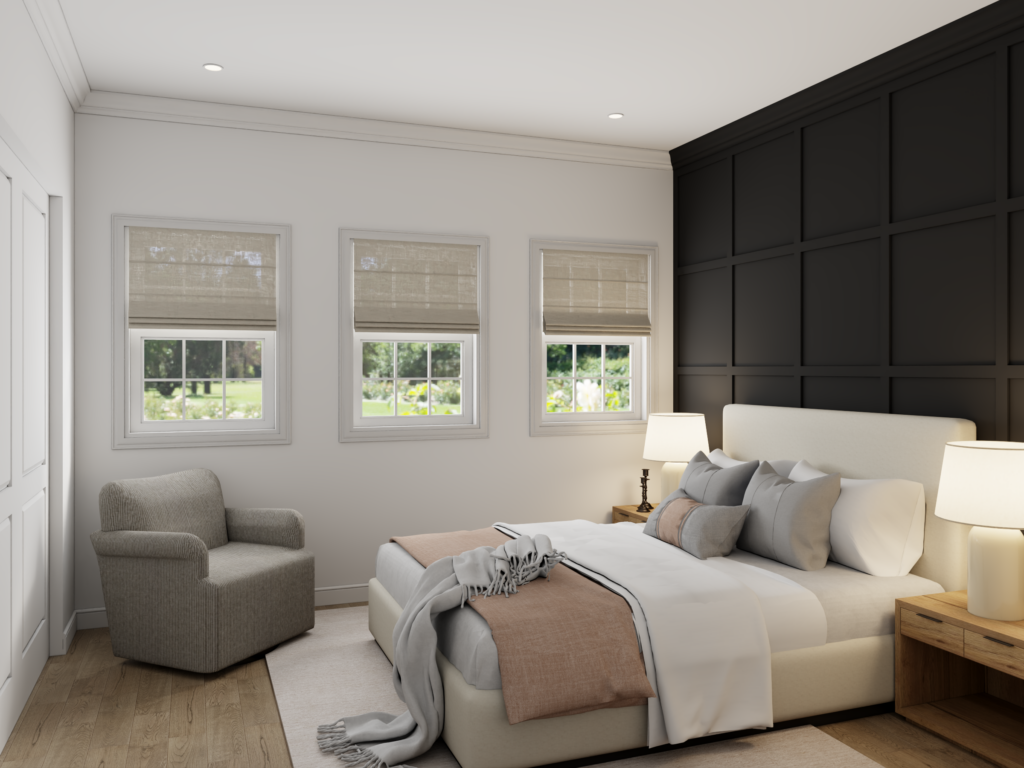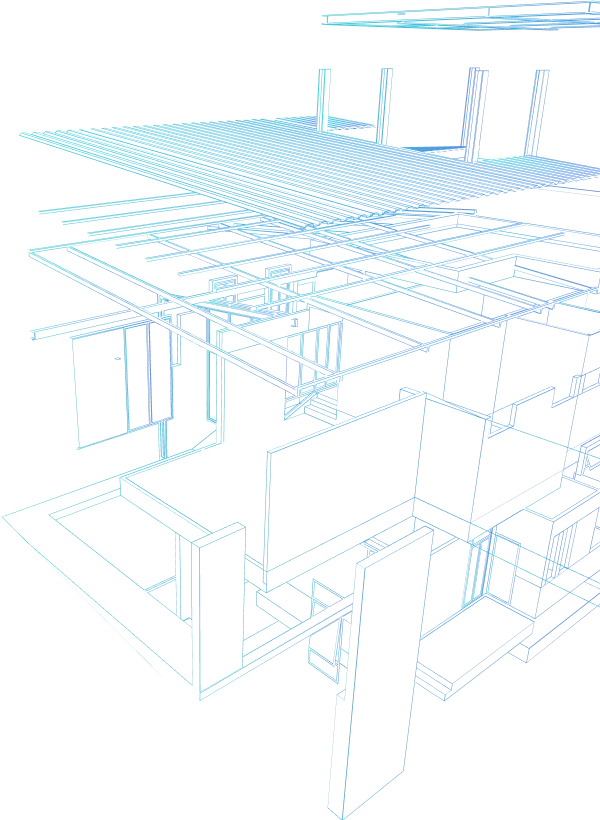The New York City office market is experiencing an unprecedented dichotomy, with prime properties attracting blue-chip tenants while overall vacancy rates hover at historic highs. Bert Rosen...
Contemporary Tiny Homes' Breno Neri on Making ADUs a Housing Solution for the East Coast




In a market where housing affordability remains a pressing concern, Contemporary Tiny Homes is bringing Accessory Dwelling Units (ADUs) to Connecticut and the broader East Coast region. Founded six months ago by Breno Neri, the company is addressing housing needs by offering custom-built small footprint homes designed specifically for the Northeast’s climate and residential preferences.


Neri, who previously built and sold a broadband internet company in Brazil before completing his PhD in Economics at NYU, has spent the last two decades working for large corporations while developing new products and services. “I felt the urge to go back to my roots and build something for myself,” says Neri. After extensive research, he became interested in the concept of ADUs.
While ADUs have gained significant traction in states like California, which issues approximately 40,000 permits annually, the market remains emerging in the Northeast. However, Connecticut’s Public Act 21-29 from 2021 has created a regulatory framework that enables municipalities to adopt statewide guidelines for ADUs or develop their own local zoning regulations.
“Most towns actually make it quite easy,” Neri explains. “Some towns have expedited processes for obtaining permits for ADUs. In some areas, it’s actually cheaper and faster to obtain a permit for an ADU than it would be for a regular single-family home.”
Contemporary Tiny Homes offers fully customizable ADUs ranging from 600 to 1,000 square feet, typically featuring one or two bedrooms. The company employs an in-house designer with over 20 years of experience creating homes in Connecticut, and their construction is led by a director with 40 years of experience building single and multi-family residences in the state.




Unlike prefabricated options common in other markets, Contemporary Tiny Homes builds their units on-site. “The homeowners in Connecticut, especially in Fairfield County, are very discerning and typically know exactly what they want or need,” notes Neri. “Most of our customers prefer something custom where we build entirely on-site.”
The entire process takes approximately six months—one to two months for design finalization and permitting, followed by three to four months for construction. The units come equipped with spray foam insulation, central heating and cooling, and energy-efficient features.


The company has identified several use cases for ADUs. Some homeowners use them as guest houses or pool houses, while others see them as investment opportunities through rental income. However, Neri finds multigenerational living to be particularly compelling.
“Instead of sending aging parents to an assisted living facility, which can be very costly, homeowners can have their parents living in an ADU,” Neri says. “They maintain their independence and privacy while remaining close enough to be checked on regularly. They can be invited for dinner and can help with childcare. Being close to grandchildren may even slow the speed of cognitive decline as someone ages.”
For those concerned about Connecticut’s harsh winters, Neri emphasizes their focus on proper insulation. “Since these homes are smaller, the ratio between surface area and volume is higher than in larger homes. We need to be very judicious about insulating them well to keep heating and cooling costs manageable.” Their units use spray foam insulation throughout and feature high-efficiency electric heat pumps for heating, cooling, and hot water.


Contemporary Tiny Homes also offers financing solutions through partnerships with three main lenders. “You can pay for these ADUs over up to 30 years with no down payment based on the equity of your main home through a HELOC,” explains Neri. “If you’re building a larger two-bedroom, 800 to 1,000 square foot ADU, you might pay around $1,400 per month for the HELOC, but you can rent it out for $2,500 or more.”
The company currently serves Fairfield, New Haven, and Hartford counties, with plans to expand to New London County and eventually into southern Massachusetts and Rhode Island by the end of the year.
“We believe the timing is right for ADUs in the East Coast market,” Neri says. “We’re excited to grow geographically and help people address their housing needs, particularly senior citizens looking to downsize or generate additional retirement income while maintaining their independence.”
For Connecticut homeowners interested in exploring whether an ADU might work for their property, Contemporary Tiny Homes offers a feasibility analysis to determine if their lot meets zoning requirements and other necessary conditions for ADU construction.
Similar Articles
Explore similar articles from Our Team of Experts.


A chance conversation with a neighbor about their not-for-sale home sparked an idea that would lead Katie Hill to reimagine how the real estate industry approaches off-market properties. As ...


Local Knowledge, Global Impact: How Denel Ihde-Sparks Built Rochester's Premier Real Estate Practice
In Rochester, Minnesota, where Mayo Clinic’s medical excellence shapes the community landscape, RE/MAX Results associate Denel Ihde-Sparks has spent three decades building a real estat...


Matthew Torres, a Century 21 Scala Group real estate agent, exemplifies how athletic discipline can translate into professional success. Torres, who recently claimed a bronze medal at the Pa...


Twenty-five thousand new affordable housing units since 2015 tell the story of New Jersey’s success in tackling one of real estate’s most pressing challenges. The state’s M...




